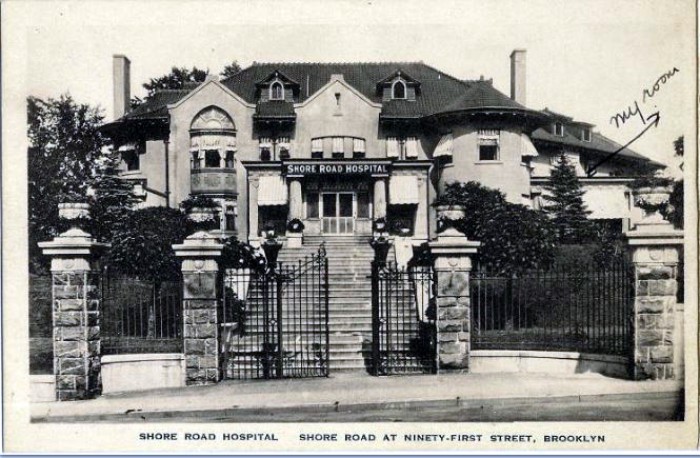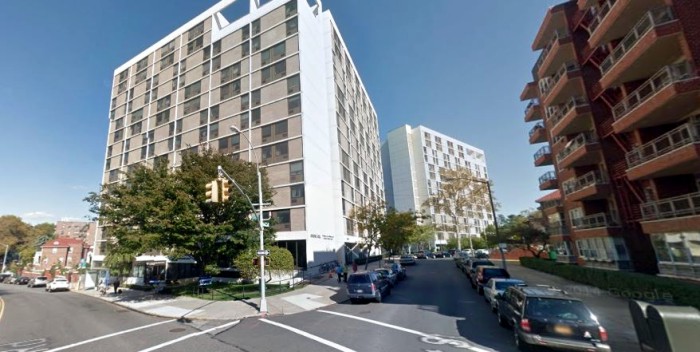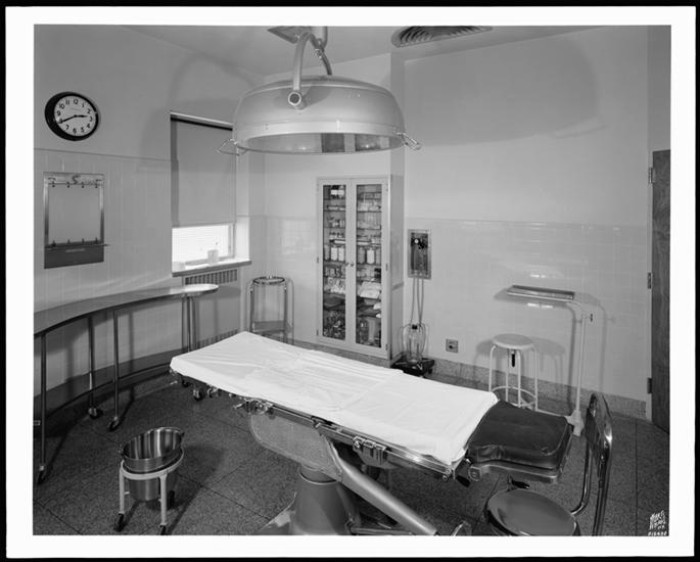Past and Present: Shore Road Hospital
A look at Brooklyn, then and now. There are lots of great postcards depicting Bay Ridge’s famous Shore Road; it has long been a popular tourist attraction. Without a doubt, from the earliest Native Americans on down to today’s day trippers, people have appreciated the amazing natural beauty of this shoreline. When Bay Ridge and…


A look at Brooklyn, then and now.
There are lots of great postcards depicting Bay Ridge’s famous Shore Road; it has long been a popular tourist attraction. Without a doubt, from the earliest Native Americans on down to today’s day trippers, people have appreciated the amazing natural beauty of this shoreline. When Bay Ridge and Fort Hamilton became desirable suburban and summer retreats for the wealthy towards the end of the 19th and beginning of the 20th century, fine mansions and summer homes began popping up all along the prime waterfront.
The swanky Crescent Athletic Club built a clubhouse and fine boathouse on the shore, and the gently curving road and its footpaths became a promenade for nature and people watching. For the owners of the grand estates facing the water, the bay offered its beauty and a place for them to moor their yachts and pleasure boats. Many of Brooklyn’s movers and shakers lived here, even if just in the summer. One of them was William F. Kenny.
He was the son of Thomas A. Kenny, the Chief of the Third Battalion of the New York City Fire Department. Kenny was born in Manhattan in 1868, and grew up on the Lower East Side. His childhood best friend was Alfred E. Smith, who would later become the four term Governor of NY, and become the first Catholic to run for president of the United States.
At thirteen, Kenny ran away from home, ending up in Texas, where he became a cattle hand for three years. He also worked his way around the country on the railroads, usually as what he would later call a “pick and shovel foreman.” Eventually, he came back home to NYC and began working for the New York Edison Company. He married Mary E. Hickey in 1898, and the couple saved their money so that Kenny could open his own contracting company and hire workers.
Within a few years, his part-time contracting business was so successful that he was able to quit the Edison Company and concentrate on his business full-time, becoming president of the W. E. Kenny Contracting Company. He parlayed his contacts within Edison, and within several years was one of the chief contractors for New York Edison, Brooklyn Edison and the Consolidated Gas Company of New York. His fortune was estimated at $30 million, in first quarter 20th century money.
Kenny bought a prime piece of property on Shore Road and 91st Street and had this palatial Mediterranean style house built around 1910 to 1911. He and his family lived here for a little more than ten years. Kenny had a magnificent Odell pipe organ installed in the grand foyer in 1912. The organ had a mahogany case and the display pipes were gilded in pure gold leaf. In 1917, the organ was upgraded with a new electrical system, and more mahogany casework was added, and more pipes gilded. The organ was also retrofitted with new ivory and ebony keys. The entire upgrade cost almost $11,000, making the pipe organ more expensive than many of Bay Ridge’s other housing.
The Kenny’s had seven children; three sons and four daughters. Alice, one of the daughters, married European aristocracy in 1923- the probably impoverished Count Francis Bacon Kuhn de Prorok. That marriage later ended in divorce. Another son, Denis, was a 20 year old student getting set to attend Yale University in 1925. Tragically, he never made it. He was shot by an unlicensed taxi cab driver in a dispute over a five dollar fare.
William Kenny owned a lot of property on Shore Road, and in Brooklyn and Manhattan. His name appears often in the real estate section of the papers and trade magazines. He was a frequent buyer, seller and trader. In 1921 he traded this house and several other Shore Road properties for several Manhattan properties, and the family moved to 820 Fifth Avenue in Manhattan, a new palatial apartment building on the corner of East 63rd Street. The family moved several times after that, always to better accommodations.
William Kenny was a proud and generous supporter of Al Smith, his boyhood friend. He never got too involved in politics, but he was the owner of the “Tiger Room” where Tammany Hall politicians and friends hung out. When Smith ran for president in 1928, Kenny gave $125,000 to the campaign, the highest single amount given to a candidate at that time. Al Smith did not win, but the two remained friends for the rest of their lives. William Kenny died in 1951 at the age of 83.
The Kenny house on Shore Road became the Shore Road Hospital, a private hospital servicing the Bay Ridge area. Although it was a full service hospital, it specialized in maternity care. Thousands of Brooklynites were born there during its long run. Over the years the hospital expanded beyond the main house, with plenty of room on the huge grounds of the estate for new buildings. Nurses lived on site, as did some of the maintenance people and caretakers.
The hospital was very well regarded, always improving its care facilities with new operating rooms and the newest equipment and procedures. They introduced new forms of anesthesia for women giving birth, and were THE place to go to have a baby for many people all over Brooklyn. Many well-known people were under Shore Road’s care. One of the most interesting, with a tie to Mr. Kenny, was Louis Arico, who died at the hospital in 1936.
He had been William Kenny’s long time barber, and operated a tonsorial parlor on Duane and Reade Streets, near City Hall. His famous patrons also included Al Smith and Mayor Jimmy Walker. Kenny had taken a long trip to Europe in 1932, but was unhappy with the barbers in London. He had Arico flown out to England to give him a shave and a haircut. Arico landed, went to the hotel and got to work. Kenny was very pleased, and took Arico with him on for the rest of his tour of the continent. It was rather ironic that Arico spent his last days in Mr. Kenny’s former home.
By the way, the impressive organ that Kenny had installed stayed in the hospital for many years. There are records of its tuning schedule. But as the hospital expanded, the organ took up too much room, and wasn’t needed, and was sold to the Central Park Baptist Church in Manhattan. Unfortunately, the list of former hospitals In New York City is much larger than the list of current hospitals. Shore Hospital joined that list. The entire hospital complex was torn down for a huge senior apartment complex called Shore Hill Apartments. The buildings were constructed in 1977. They include heath care facilities provided by Lutheran Medical Center. One would never know the rich history of the Kenny house from looking at the site now. But nature always wins, and that marvelous view remains. GMAP












What's Your Take? Leave a Comment